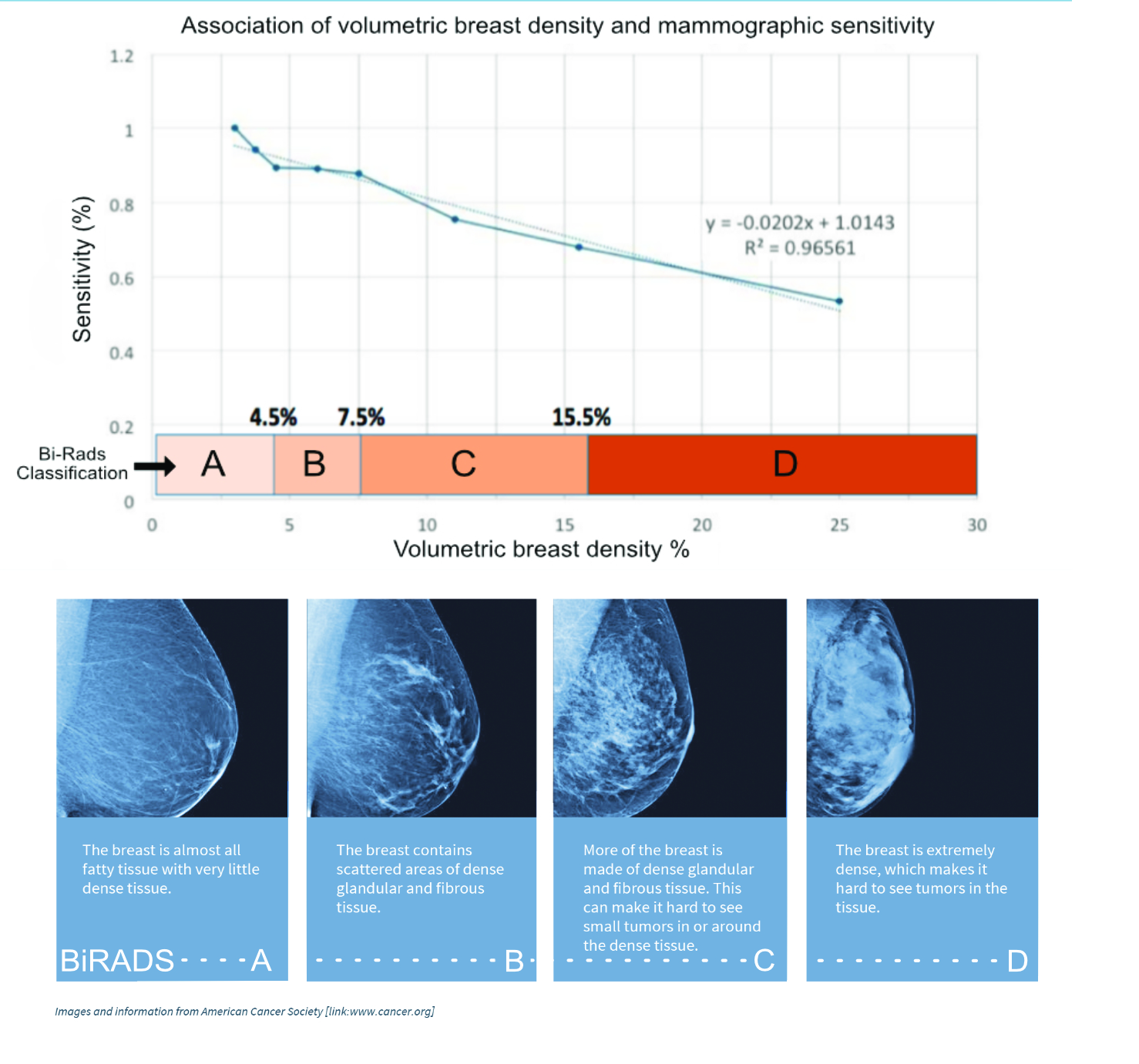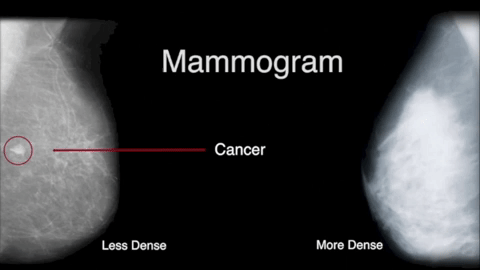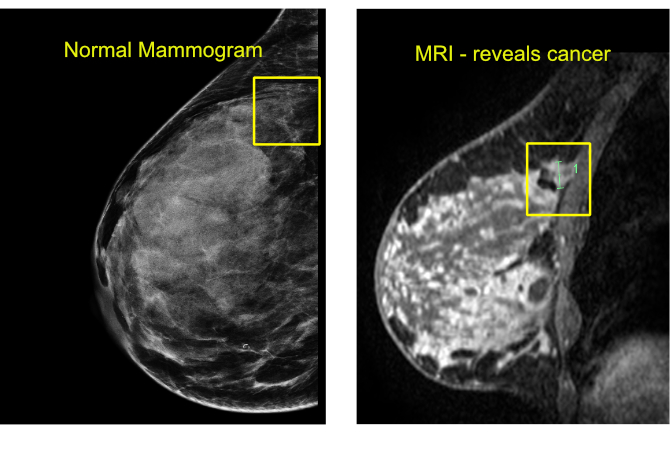In cases of high MBD, a mammogram’s ability to detect cancers is about the same as flipping a coin.
A recent study published in the American Journal of Roentgenology (January 2017) demonstrated the remarkable loss of breast cancer detection sensitivity as MBD increases. This study included a large cohort of women (~250,0000) undergoing screening mammography (as measured by an automated volumetric analysis algorithm).
As you can see from the table below, as breast density increases, there is a linear decrease in the sensitivity of mammograms to detect cancers.
At >25% volumetric breast density, mammography sensitivity drops below 50 % in its ability to detect cancers. Flipping a coin has better odds.

Even though the study stopped at 25% density, the conclusion of the study stated that mammographic sensitivity continues to decrease at approximately the same rate as volumetric breast density increases.
In some cases, breast density “hides” or “masks” breast cancer because breast cancers and breast density both appear “white” on a mammogram. It has been described as trying to see a snowflake in a snowstorm. But this is not necessarily the case. The breast density affects the mammogram machine’s focus, magnifying the breast density and minimizing anything else. It has been described like the breast density creates a ‘smokescreen’ that cancers can hide behind.

The following are examples of de-identified (anonymous) patients who had a normal mammogram, then had a breast MRI within weeks, if not days, of the normal mammogram. All patient mammogram results showed a breast density of Bi-Rads “D” or >15.5% volumetric density. And all their breast MRIs showed cancers that the mammograms were not sensitive enough to detect because of high breast density.



High MBD not only increases the risk of developing breast cancer, it significantly diminishes the ability of the most common breast screening modality (eg mammography) to detect breast malignancy.
High MBD is the most common cause of interval cancers in screening programs.